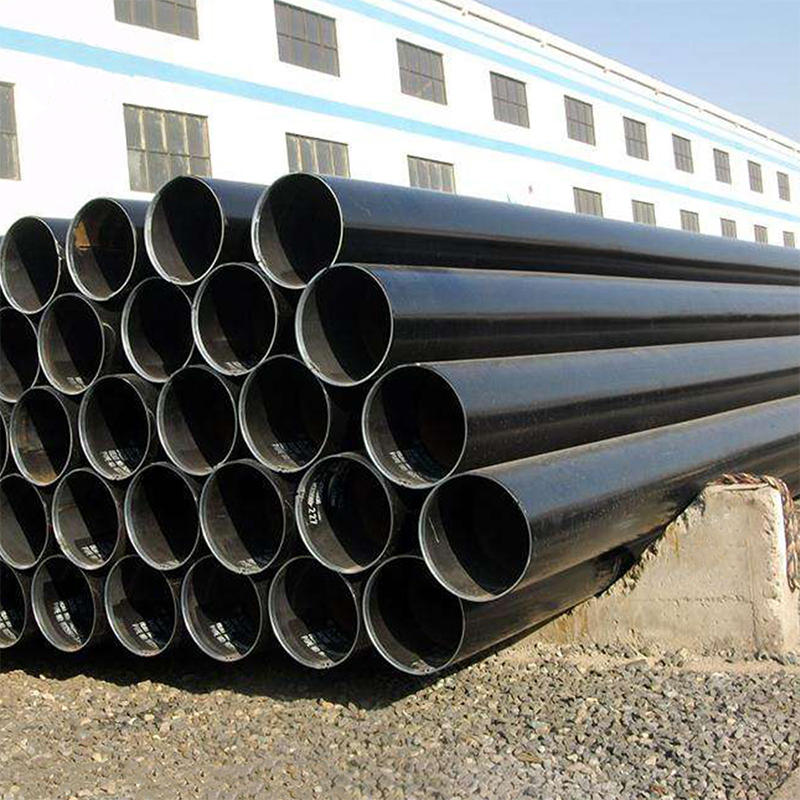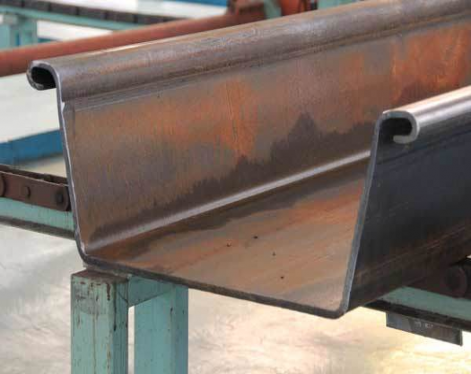What is steel pipe decarburization?
Decarburization is the phenomenon in which the surface carbon content of steel pipes is reduced during heat treatment. The essence of decarburization is that the carbon atoms in the steel pipe react with the furnace atmosphere such as hydrogen or oxygen at high temperature to generate methane or carbon monoxide.
Decarburization is the result of interdiffusion between atoms during heat treatment. On the one hand, oxygen diffuses into the steel; on the other hand, the carbon in the steel diffuses outward. The decarburization layer can only form when the decarburization rate exceeds the oxidation rate. When the oxidation rate is very high, no obvious decarburization phenomenon may occur, that is, after the decarburization layer is generated, the iron will be oxidized to form oxide scale. Therefore, in an atmosphere with relatively weak oxidation, a deeper decarburization layer can be formed.
The decarburization layer of the steel pipe includes two parts: a full decarburization layer and a partial decarburization layer (transition layer). The partial decarburization layer refers to the structure of the steel with normal carbon content after the full decarburization layer. When decarburization is not severe, sometimes only a partial decarburization layer is seen without a full decarburization layer.
The depth of the decarburized layer can be measured using a variety of methods based on changes in decarburized components, structure and properties. In actual heat treatment production, the metallographic method is most commonly used to measure the decarburization layer of steel.

Reasons and countermeasures for decarburization of cold-drawn seamless pipes
Under normal circumstances, when decarburization occurs on the surface of cold-drawn seamless pipes, it is because the steel wires come into contact with the air when the lead is being melted, causing decarburization and oxidation to occur at the same time. This is mainly due to the presence of solid solution carbon and oxidation in the iron. After the water vapor, oxygen, carbon dioxide and other gases in the air come into contact, severe decarburization occurs on the surface of the cold drawn tube. There are two ways to solve the problem of decarburization on the surface of the cold drawn tube.
1. The air in the furnace can be controlled more purposefully to keep it in a restorative state, which can effectively prevent decarburization on the surface of cold drawn tubes.
2. Inject or blow an appropriate amount of neutral protective nitrogen directly into the furnace. Nitrogen can dispel the oxidizing atmosphere in certain sections while preventing air from penetrating deep, reducing or avoiding decarbonization problems.
To solve the problem of surface decarburization, the main thing is to deal with the heat treatment process, because decarburization and oxidation of the spiral tube are carried out at the same time. Therefore, during the heat treatment process, we should try our best to prevent the cold drawn precision steel pipe from being exposed to air. Contact, which can improve the decarburization phenomenon. The medium that causes decarburization on the surface of cold drawn precision steel pipes is mainly oxidizing gases such as oxygen, water vapor and carbon dioxide. When these gases come into contact with the heated spiral tube, it will cause oxidation of the spiral tube. and decarbonization, therefore, it is also very important to control the ratio of carbon dioxide and carbon monoxide in the furnace. In fact, it is also very effective to add protective gas nitrogen into the cold-drawn precision steel pipe forging furnace. Nitrogen can dispel certain oxidizing gases and reduce the decarburization of spiral tubes.
Decarburization is the phenomenon in which the surface carbon content of steel pipes is reduced during heat treatment. The essence of decarburization is that the carbon atoms in the steel pipe react with the furnace atmosphere such as hydrogen or oxygen at high temperature to generate methane or carbon monoxide.
Decarburization is the result of interdiffusion between atoms during heat treatment. On the one hand, oxygen diffuses into the steel; on the other hand, the carbon in the steel diffuses outward. The decarburization layer can only form when the decarburization rate exceeds the oxidation rate. When the oxidation rate is very high, no obvious decarburization phenomenon may occur, that is, after the decarburization layer is generated, the iron will be oxidized to form oxide scale. Therefore, in an atmosphere with relatively weak oxidation, a deeper decarburization layer can be formed.
The decarburization layer of the steel pipe includes two parts: a full decarburization layer and a partial decarburization layer (transition layer). The partial decarburization layer refers to the structure of the steel with normal carbon content after the full decarburization layer. When decarburization is not severe, sometimes only a partial decarburization layer is seen without a full decarburization layer.
The depth of the decarburized layer can be measured using a variety of methods based on changes in decarburized components, structure and properties. In actual heat treatment production, the metallographic method is most commonly used to measure the decarburization layer of steel.

Reasons and countermeasures for decarburization of cold-drawn seamless pipes
Under normal circumstances, when decarburization occurs on the surface of cold-drawn seamless pipes, it is because the steel wires come into contact with the air when the lead is being melted, causing decarburization and oxidation to occur at the same time. This is mainly due to the presence of solid solution carbon and oxidation in the iron. After the water vapor, oxygen, carbon dioxide and other gases in the air come into contact, severe decarburization occurs on the surface of the cold drawn tube. There are two ways to solve the problem of decarburization on the surface of the cold drawn tube.
1. The air in the furnace can be controlled more purposefully to keep it in a restorative state, which can effectively prevent decarburization on the surface of cold drawn tubes.
2. Inject or blow an appropriate amount of neutral protective nitrogen directly into the furnace. Nitrogen can dispel the oxidizing atmosphere in certain sections while preventing air from penetrating deep, reducing or avoiding decarbonization problems.
To solve the problem of surface decarburization, the main thing is to deal with the heat treatment process, because decarburization and oxidation of the spiral tube are carried out at the same time. Therefore, during the heat treatment process, we should try our best to prevent the cold drawn precision steel pipe from being exposed to air. Contact, which can improve the decarburization phenomenon. The medium that causes decarburization on the surface of cold drawn precision steel pipes is mainly oxidizing gases such as oxygen, water vapor and carbon dioxide. When these gases come into contact with the heated spiral tube, it will cause oxidation of the spiral tube. and decarbonization, therefore, it is also very important to control the ratio of carbon dioxide and carbon monoxide in the furnace. In fact, it is also very effective to add protective gas nitrogen into the cold-drawn precision steel pipe forging furnace. Nitrogen can dispel certain oxidizing gases and reduce the decarburization of spiral tubes.









